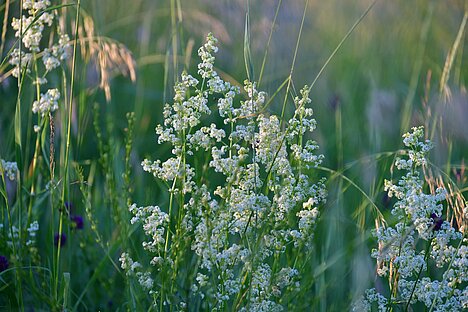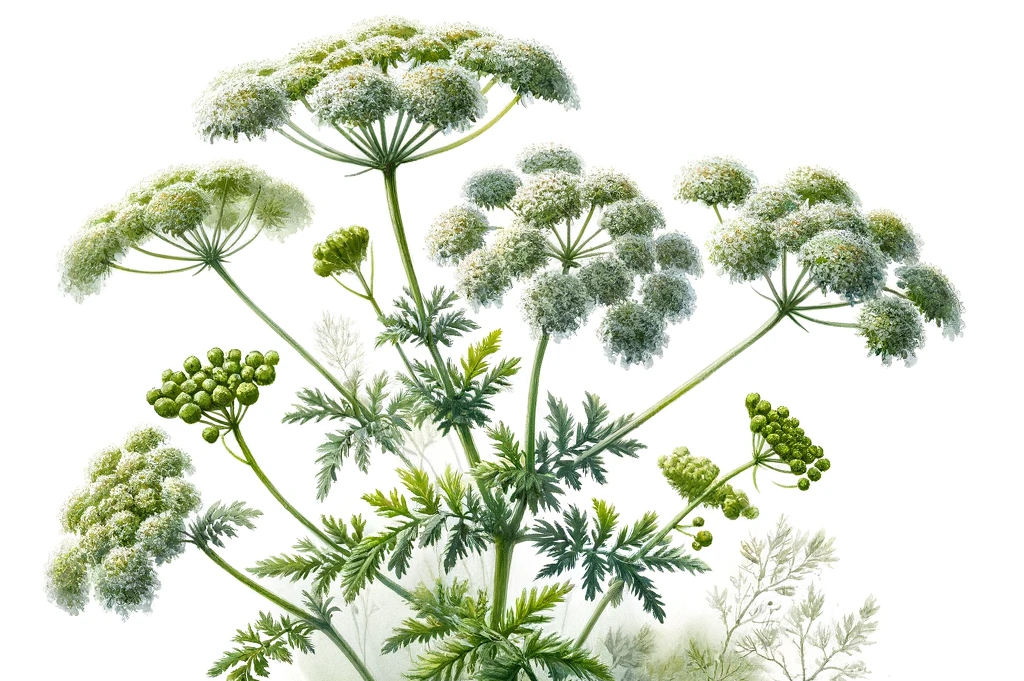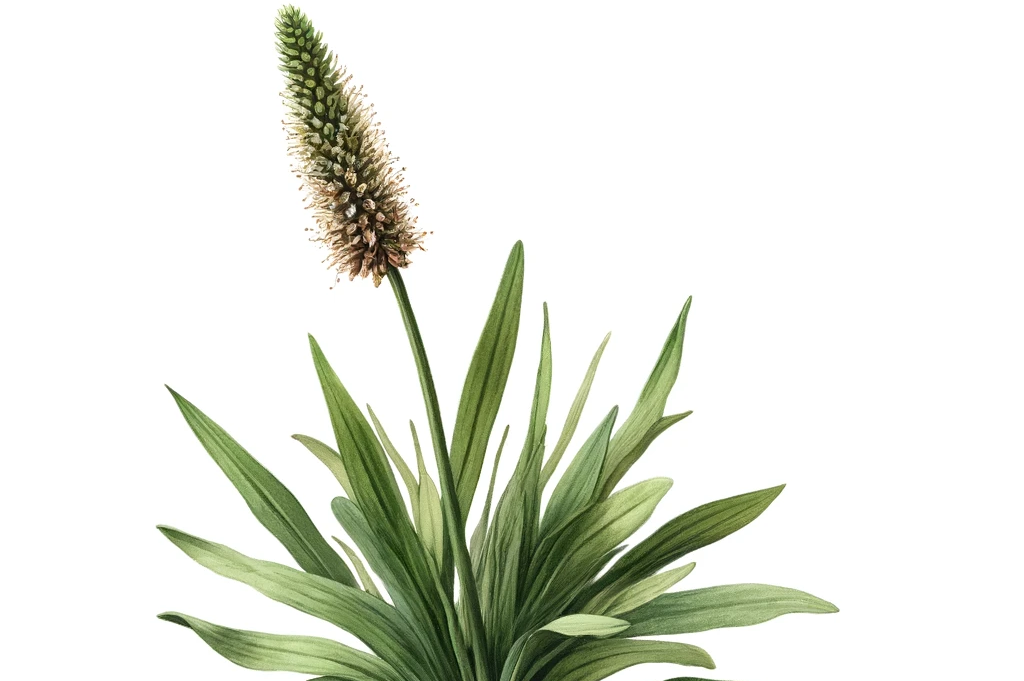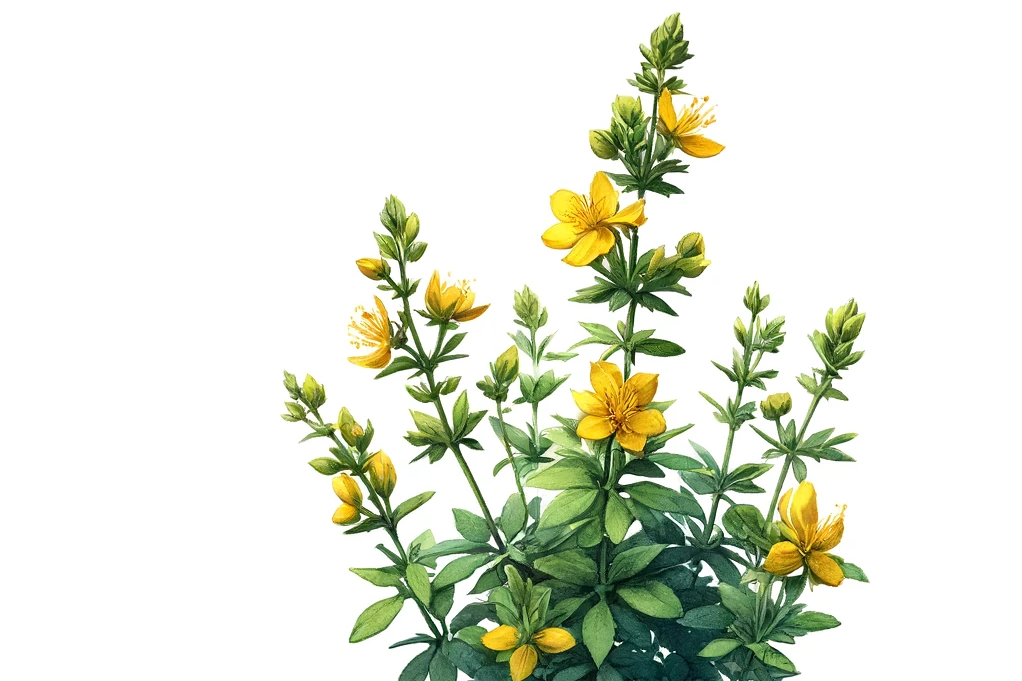Bedstraw

What is bedstraw?
Bedstraw belongs to the rue family and is widespread in Europe, Asia and North America. It grows mainly along roadsides, in meadows and in sparse forests. There are different types of bedstraw, such as true bedstraw, burdock bedstraw and meadow bedstraw. They all look very similar and have small, white or pink flowers that bloom from May to September.
Bedstraw has a bitter and slightly sour taste and contains many ingredients that are important for your dog's health. These include, for example:
- Silicic acid: Strengthens skin, coat, claws, bones, tendons and joints
- Flavonoids: Have an antioxidant and anti-inflammatory effect
- Coumarins: Have an antibacterial and antispasmodic effect
- Saponins: Have an expectorant and diuretic effect
- Asperuloside: Has a calming and pain-relieving effect
- Rennet ferment: Has a digestive effect
What are the benefits of bedstraw for dogs?
Bedstraw can help your dog maintain or improve his health in a number of ways. Here are some examples:
- Bedstraw supports the natural function of the kidneys and urinary tract. It promotes the elimination of toxins and can help with urinary tract infections or bladder stones.
- Bedstraw stimulates the metabolism and can help with digestive complaints such as flatulence or constipation. It is also effective against intestinal worms.
- Bedstraw nourishes the skin inside and out. It can help with skin problems such as eczema, itching or dandruff. You can give your dog bedstraw as a tea to drink or apply it as a compress to the affected areas.
- Bedstraw calms the nervous system and can help with stress, anxiety or sleep disorders. It also has a pain-relieving effect on headaches or muscle tension.
What are the disadvantages of bedstraw for dogs?
Bedstraw is a very well-tolerated plant that you can give your dog in moderation. However, there are a few things you should bear in mind to avoid possible side effects:
- Bedstraw can affect blood clotting. If your dog is taking blood-thinning medication or has a blood clotting disorder, you should speak to your vet before feeding your dog bedstraw.
- Bedstraw can strengthen or weaken the effect of other medications. If your dog is taking medication for the heart, liver or thyroid, you should also speak to your vet before feeding bedstraw.
- Bedstraw can trigger allergic reactions. If your dog is sensitive to plants or has a known allergy, you should be careful and test their tolerance to bedstraw.
How do you feed bedstraw to your dog?
You can give your dog bedstraw as a fresh or dried herb, as a tea or as a tincture. The dosage depends on the size and weight of your dog. As a guide, you can use the following quantities:
- Fresh or dried herb: 1-2 teaspoons per 10 kg body weight per day
- Tea: 1-2 teaspoons per 10 kg body weight per day
- Tincture: 1-2 drops per 10 kg body weight per day
You can mix the bedstraw into the food or give it separately. Make sure that your dog always has enough water available, as bedstraw has a diuretic effect.
Bedstraw is a versatile medicinal plant that can help your dog with many ailments. It strengthens the kidneys, metabolism, skin and nervous system. However, you should always pay attention to the correct dosage and possible interactions with other medications.
If you notice any signs of hypersensitivity or poisoning in your dog, you should see your vet immediately. We are not a substitute for a vet, but we try to be as accurate as possible. Every dog reacts differently and we recommend you get a second opinion or consult your vet if in doubt.
Stay healthy and take good care of your four-legged friend!😊
Similar to Bedstraw
Yarrow (Achillea millefolium) is a perennial plant from the Asteraceae family. It has finely pinnate leaves and white or pink flowers that are arranged in flat umbels. The plant grows to a height of...
Ribwort plantain (Plantago lanceolata) belongs to the plantain family and is native to Europe, Asia and North Africa. It grows mainly on nutrient-rich soils and is very adaptable. Ribwort plantain...
St. John's wort, also known as Hypericum perforatum, is a flowering plant that is native to Europe, Asia and North America. The plant has been used for centuries in folk medicine to treat various...
Chamomile is a plant from the composite family that is mainly found in Europe, Asia and Africa. It has white flowers with a yellow center that exude a pleasant fragrance. The flowers are dried and...



